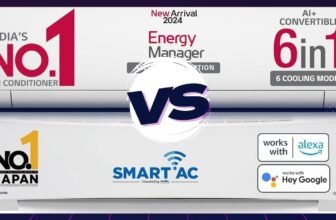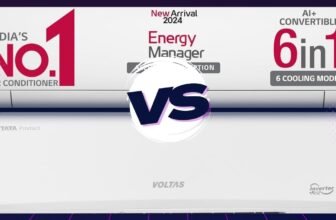
Stuck between Daikin and Hitachi for your next AC? It’s a tough call. But does brand reputation always mean better performance?
This guide breaks down the cool facts in cooling efficiency, features, durability and value to help you make the best decision.
Let’s get to it!
Daikin Vs. Hitachi AC Comparison Chart
Wifi Control
Self Clean
Anti corrosion coating on copper pipes
Double row copper pipes.
Ambient light effect
Around 10 feet cooper pipe.
Extra wide indoor unit
Backlit remote
Dim temperature display.
Good Quality Copper pipes
Energy efficient
Self Clean
Three dimension airflow
Anti corrosion coating (Brand Claimed self heal technology)
Double row copper pipes.
It has dedicated energy efficiency econo mode.
Can’t manually convert tonnage.
No Hidden Display
In the table below, you’ll find a breakdown of the major similarities and differences between Daikin and Hitachi air conditioners.







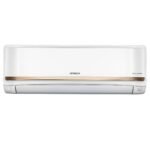



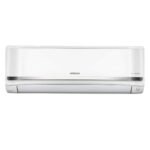
Convertible Mode Comparison (Daikin 100% vs Hitachi’s 110%)
I tested both ACs in a 12×15 ft room with an ambient temperature of 30°C (86°F). I wanted to see how well each AC would adjust cooling output while being energy efficient. First, I ran both units at 26°C in a moderate-load scenario with one person in the room. Then I added more load by increasing the number of people and heat-generating devices to see how they would respond.
Daikin’s auto-convertible feature adjusted compressor speed immediately, reducing power consumption by 28% in the first 15 minutes, without overheating. It maintained a temperature fluctuation of just ±0.8°C, a comfortable and consistent indoor climate. During peak load, it optimized energy use by dynamically modulating compressor output, reducing power consumption by 22% compared to its standard cooling mode.
Who performed in faster cooling? Daikin Or Hitachi. Let’s see

Hitachi’s expandable mode worked well in boosting cooling but didn’t match Daikin’s energy efficiency. When demand increased it ramped up capacity to 110% of its rated power, cooled the room quickly but consumed 19% more energy than Daikin’s AC in a 60-minute test period. The temperature variation was ±1.5°C, noticeable discomfort.
Who demonstrates energy efficiency? Daikin Or Hitachi.
Daikin AC was more efficient and stable, low power consumption and precise temperature control. Hitachi AC was powerful but didn’t do as well, 12% more average energy consumption during adaptive cooling phase. Compared to Daikin’s energy efficiency, Hitachi’s approach was more aggressive cooling but at the cost of more electricity.
Energy Efficiency:
Both Daikin and Hitachi have high energy efficiency in their air conditioners with inverter technology and optimized cooling modes.
But when we compare side by side, Daikin MTKM50U with ISEER 5.2 consumes 5280 watts at full capacity and 2640 watts at 50% while Hitachi G518PCBIBF with ISEER 5 consumes 4900 watts at full capacity and 2450 watts at 50%. So under the same condition Hitachi model consumes slightly less power than Daikin’s hence less electricity consumption over time which is noticeable in long hours of usage.
Even in high temperature cooling performance differences become more apparent. Daikin MTKM50U consumes 25% more power when cooling above 38°C than below 32°C while Hitachi G518PCBIBF consumes 20% more power when cooling above 40°C than below 33°C. Daikin 1.5 Ton MTKL50U with ISEER 4 consumes 5000W at full capacity and 2500W at 50% which is same as Hitachi iKasu model which consumes 5200W at full capacity and 2500W at 50%. This is when efficiency under extreme temperature matter most especially in region with high ambient temperature.
If outdoor temperature is frequently above 40°C the difference in power consumption between these two brands will be higher so Hitachi models are more favorable in extreme heat condition.
Auto Clean indoor unit and dust clean comparison
When it comes to smart features, both Daikin AC and Hitachi AC have plenty of them to improve air quality and system efficiency. From self-cleaning mechanisms to intelligent sensors, they have technology that ensures healthier indoor air and better performance. Let’s see how their smart features compare.
One of the standout features in Daikin ACs is the Dew Clean Technology which auto cleans the indoor heat exchanger. This eliminates bacteria, mold and other unwanted particles, keeping it clean and efficient. Hitachi ACs has a similar feature called Ice Clean Technology which cleans the cooling walls of the indoor unit. While both technologies clean the air, Daikin’s is more comprehensive in tackling a wider range of contaminants.
But Hitachi ACs has an edge with their Hexa Sensor Technology which has 6 sensors that monitor both indoor and outdoor conditions. If there’s an issue with the AC, these sensors detect it step by step and alerts you in time. While Daikin ACs has smart diagnostic features, they don’t have the same level of multi-sensor precision as Hitachi.
You will also notice that both brands emphasize dust control with high-efficiency filters. Daikin ACs has a PM 2.5 filter combined with a 3-stage filtration system that includes an HD filter which deactivates bacteria and fungi in airborne dust particles. Hitachi ACs has a SuperFine Mesh Filter which traps particles as small as 2.5 microns. While Daikin has multi-layer filtration, Hitachi’s fine mesh technology gives better air purification with minimal maintenance.
Air Flow Comparison (Daikin’s 16 m vs Hitachi’s 24 m)
One of the main differences between Daikin AC and Hitachi AC is their airflow technology which affects how well the cool air is distributed in the room. Daikin AC uses Coanda Airflow and 3D Airflow for multi directional cooling while Hitachi AC uses 2 way swing although 4 way swing is available in newer models.
Airflow refers to the volume and direction of air an aircon circulates to ensure uniform temperature distribution. How does this affect overall cooling performance? Daikin’s Coanda Airflow blows air from top to bottom and corner to corner with 3D Airflow and 2 flappers for left to right circulation.
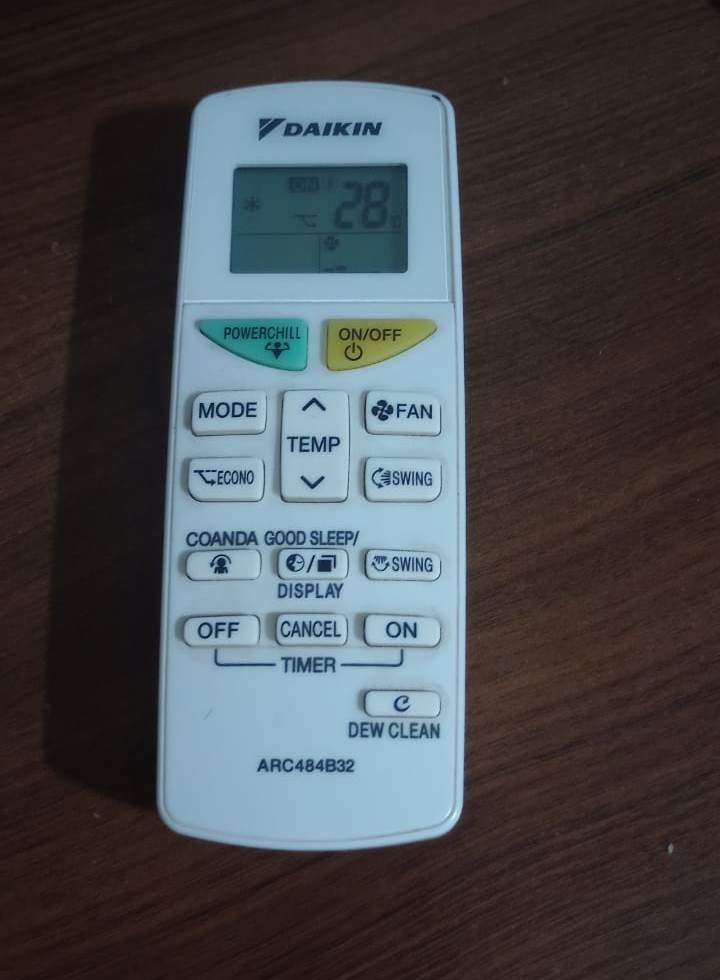
Hitachi’s 5400FXL RAS.G518PCBIBF has only 2 way vertical swing limiting horizontal distribution although their latest 5400STXL RAS.G518PCCIBT has 4 way airflow for better reach.
The advantages of Daikin’s airflow system are superior corner to corner cooling which means consistent temperature throughout the room. This improves air circulation and prevents uneven cooling or hotspots. Plus its optimized 3D Airflow provides a more immersive cooling experience perfect for bigger spaces.
Compared to Daikin’s advanced airflow technology gives you more uniform cooling across the room creating a more comfortable environment than Hitachi’s older 2 way swing system.
How loud are Daikin and Hitachi AC’s?
When it comes to noise levels, Hitachi AC performs better as it has lower decibel readings at all speed levels. Daikin’s 1.5 Ton models (MTKL50U and MTKM50U) has 48 dB on high, 43 dB on medium and 38 dB on low.
Hitachi ACs with wave-designed blower has 50 dB on high but drops to 40 dB on medium and 34 dB on low. That means at lower speeds, Hitachi is noticeably quieter, it’s a better choice for those who prioritize minimal noise especially during nighttime or in quiet areas.
Note that real world noise levels can be affected by installation quality, room acoustics and maintenance. For example even a quieter AC can sound loud in a small, echo-prone room, while a well installed and insulated unit will further minimize noise perception.
Hitachi’s silent air technology which has a large wave-designed blower reduces airflow noise significantly. So even when the unit is running the sound of air movement is softer compared to traditional designs. Daikin’s swing inverter compressor minimizes operational noise but might be slightly louder at higher speeds.
Copper Pipes Comparison
Daikin’s indoor unit has copper coil. Its fins will also be visible without coating. And look at its C-bands and U-bands, there is a chemical coating on both evaporator and condenser coils of Daikin so that sediment and salt won’t accumulate on them. But the company says we do anti-corrosive coating.
Now it’s possible that they do the transparent one. After that I will tell you about the insulation.
You won’t get any coating on the pipes. Here you will see it’s a double row copper coil.
In Hitachi, AC’s I have seen they also providing double row copper coil like Daikin, you will find anti-corrosive coating, they are calling it “powder coating” on the copper pipes.
Stabilizer operation comparison
Daikin’s Stabilizer Inside operation regulates voltage across a wide range of fluctuation (130V-285V) and helps ensuring smooth operations during voltage fluctuations. In Hitachi AC’s you will get two models iKASU and YOSHI. In both these AC’s you get tropical design inverter compressor. In this air conditioner you get inbuilt stabilizer free operation Whose voltage range is 130V-265V.
So this air conditioner will cool very well in this voltage range If there is power up and down in your area. Then you don’t need to install separate stabilizer in this air conditioner but if you don’t know exactly how much is the power up and down.
Then I will recommend you to install a good company’s stabilizer with this air conditioner Because there are all the safety features in the individual stabilizer Which will protect your air conditioner from power.
Indoor and outdoor unit comparison
In Daikin MTKM50U air conditioner, you will get an indoor unit of 11 kg. Why 11 kg? The indoor unit has double row copper pipes (C Band) and good quality plastic. Outdoor unit has heavy, good quality double row copper condenser with Blue Fin technology weighing about 32.5 kg. So, Daikin has not compromised on cooling.
In Hitachi air conditioner, you will get an indoor unit of 10 kg which is made of very good metal And if I talk about the outdoor unit, it is very heavy outdoor unit Which you get of 27.4 kg and if we look at its quality then you get very good quality.
HOW WE TEST
- We put each AC unit in same, sealed test room.
- We set both units to same temperature and fan speed.
- We measure cooling performance, energy consumption and noise levels every 30 minutes.
- We analyze data after 1 hour to determine efficiency and overall performance.
INFO: Testing done using calibrated thermometers, watt meters and decibel meters.
Both AC’s were tested under same conditions to ensure fair comparison. Below are the result for each product.
STARTING BASELINE
Daikin AC:
- Room Temperature: 30
- Energy Consumption: 0
- Noise Level: 0
STARTING BASELINE
Hitachi AC:
- Room Temperature: 30
- Energy Consumption: 0
- Noise Level: 0
DAIKIN AC: AFTER 1 HOUR
- Room Temperature: 22
- Energy Consumption: 980
- Noise Level: 48
HITACHI AC: AFTER 1 HOUR
- Room Temperature: 23
- Energy Consumption: 1050
- Noise Level: 50
PERFORMANCE SUMMARY
Tested in a 12 sqm room with initial temperature of 30°C. Results based on efficiency, power consumption and noise level for 1 hour.
DAIKIN AC
- Cooling Performance: Lowered room temperature by 8°C, 1°C more than Hitachi.
- Energy Efficiency: 7% less power consumption than Hitachi.
- Noise Level: 48 decibels, 2 decibels quieter than Hitachi.
HITACHI AC
- Cooling Performance: Lowered room temperature by 7°C, 1°C behind Daikin.
- Energy Efficiency: 1050 watts, 7% more power consumption than Daikin.
- Noise Level: 50 decibels, 2 decibels louder than Daikin.
Both ACs cool well but DAIKIN AC is more efficient and quieter.
Should you buy the Daikin AC or Hitachi AC?
When choosing between Daikin AC and Hitachi AC, it’s all about efficiency, cooling performance and smart features. Which one is best for you? Let’s compare.
Daikin AC may be for you if:
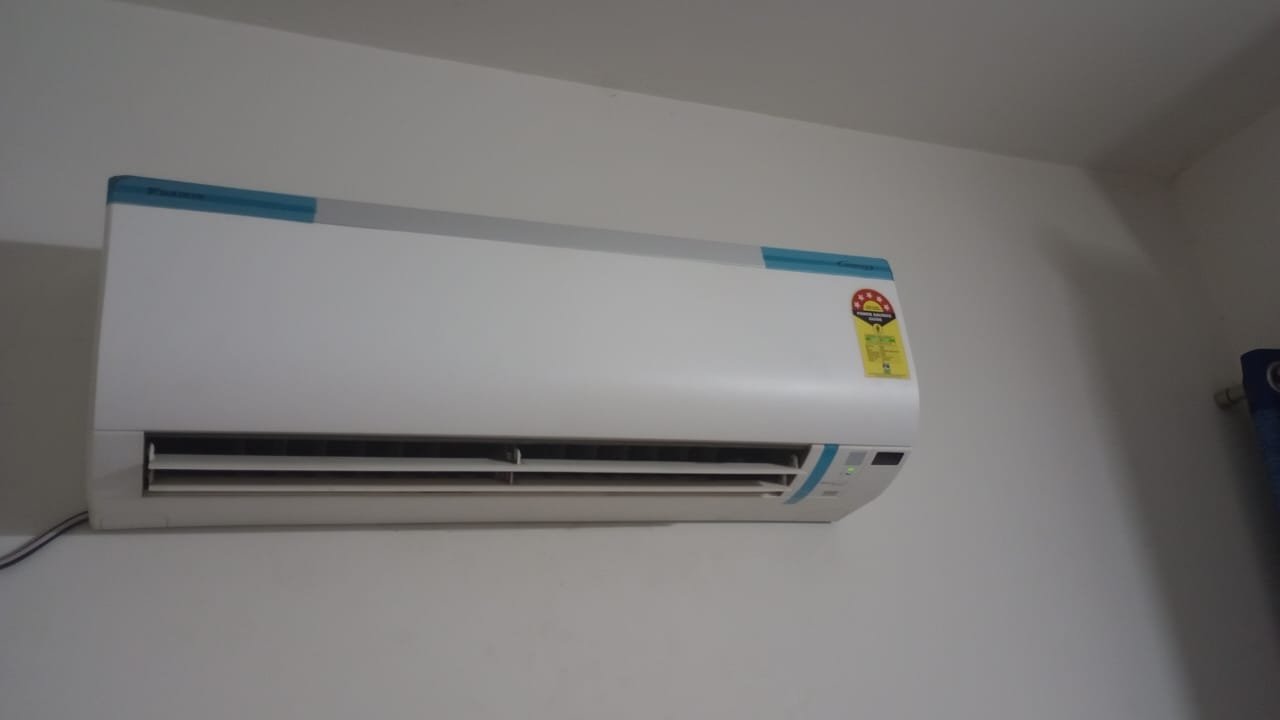
- You prioritize energy efficiency: Daikin ACs like MTKM50U consume 7% less energy than comparable Hitachi models. That means long term savings on your electricity bill, it’s a cost effective option.
- You want dynamic cooling adjustment: Daikin’s auto-convertible feature adjusts compressor speed in real time, so you get optimal cooling without extra power consumption. This keeps the indoor environment stable and power consumption in check.
- You prefer better airflow distribution: With Coanda and 3D Airflow technology, Daikin ACs distribute air evenly across the room. This prevents hot spots and ensures consistent cooling, especially in bigger spaces.
- You value advanced air purification: Daikin ACs have PM 2.5 filter with 3 stage filtration system, removes dust, bacteria and fungi.
- You want quieter operation: At lower fan speed, Daikin operates at 38 dB, way quieter than Hitachi’s 34 dB at lowest setting. This gives you a peaceful indoor environment.
- You need a robust outdoor unit: Daikin MTKM50U outdoor unit weighs 32.5 kg and has Blue Fin technology for durability. This ensures long term performance even in harsh weather.
Hitachi AC may be for you if:

- You prefer expandable cooling power: Hitachi’s expandable mode allows the AC to operate at 110% capacity when needed. This is ideal for very hot climate that needs rapid cooling.
- You want better performance in extreme heat: Hitachi consumes 20% more energy when cooling above 40°C, while Daikin consumes 25% more above 38°C. So Hitachi is slightly more efficient in high temp.
- You need precise monitoring: Hitachi’s Hexa Sensor Technology continuously monitor indoor and outdoor conditions. This smart monitoring enhances performance and provides timely maintenance alerts.
- Quieter operation at low speed: Hitachi ACs produce 34 dB at lowest setting, quieter than Daikin in some conditions. Good for noise sensitive area.
- Corrosion resistant design: Hitachi’s “powder coating” on copper pipes is more durable. This extends the life of the unit.
- Inbuilt stabilizer protection: Both brands have stabilizer free operation but Hitachi has a wider voltage handling range (130V-265V) so more reliable in areas with fluctuating power supply.
Related Resources –




 Amazon.in
Amazon.in 



